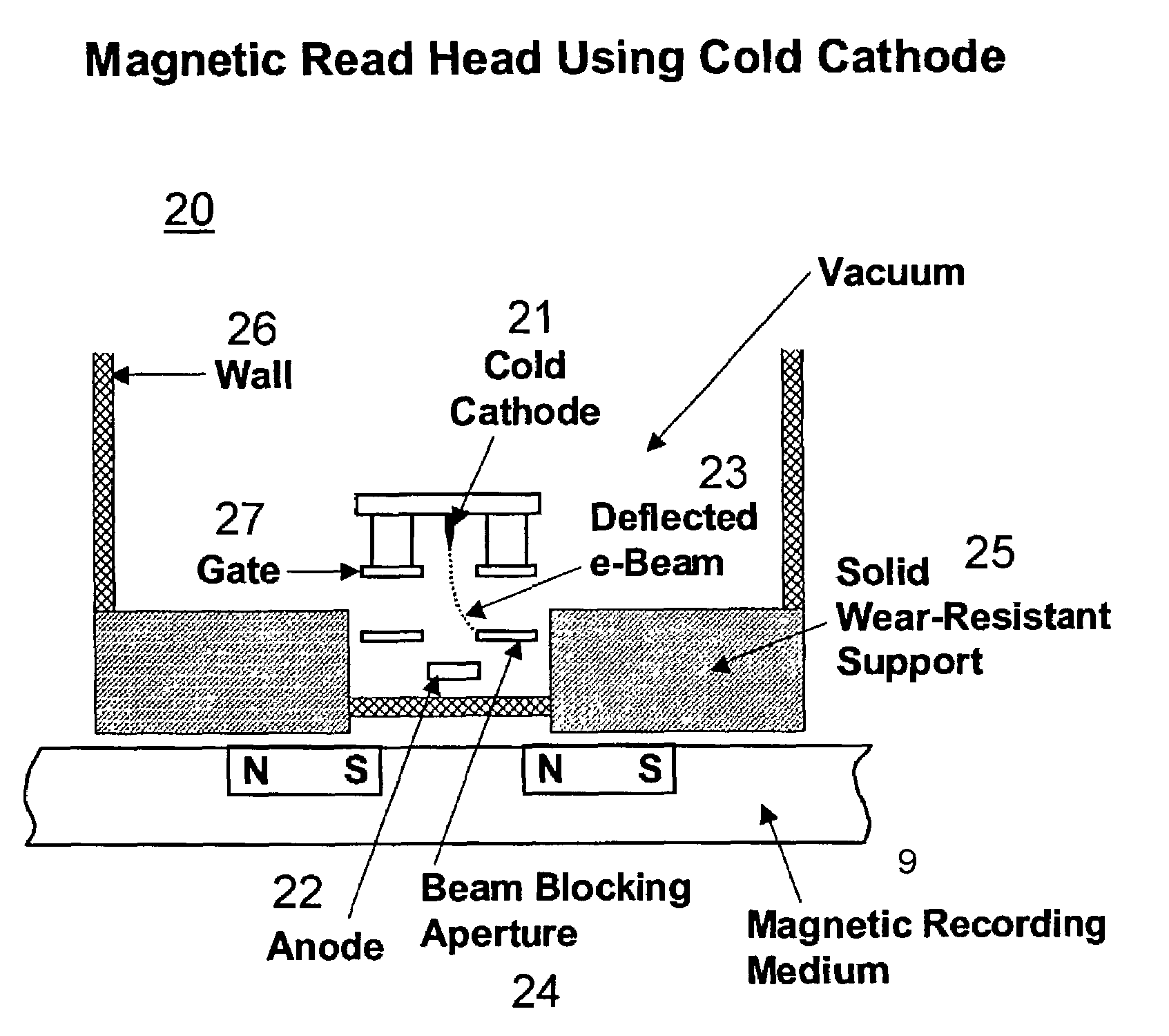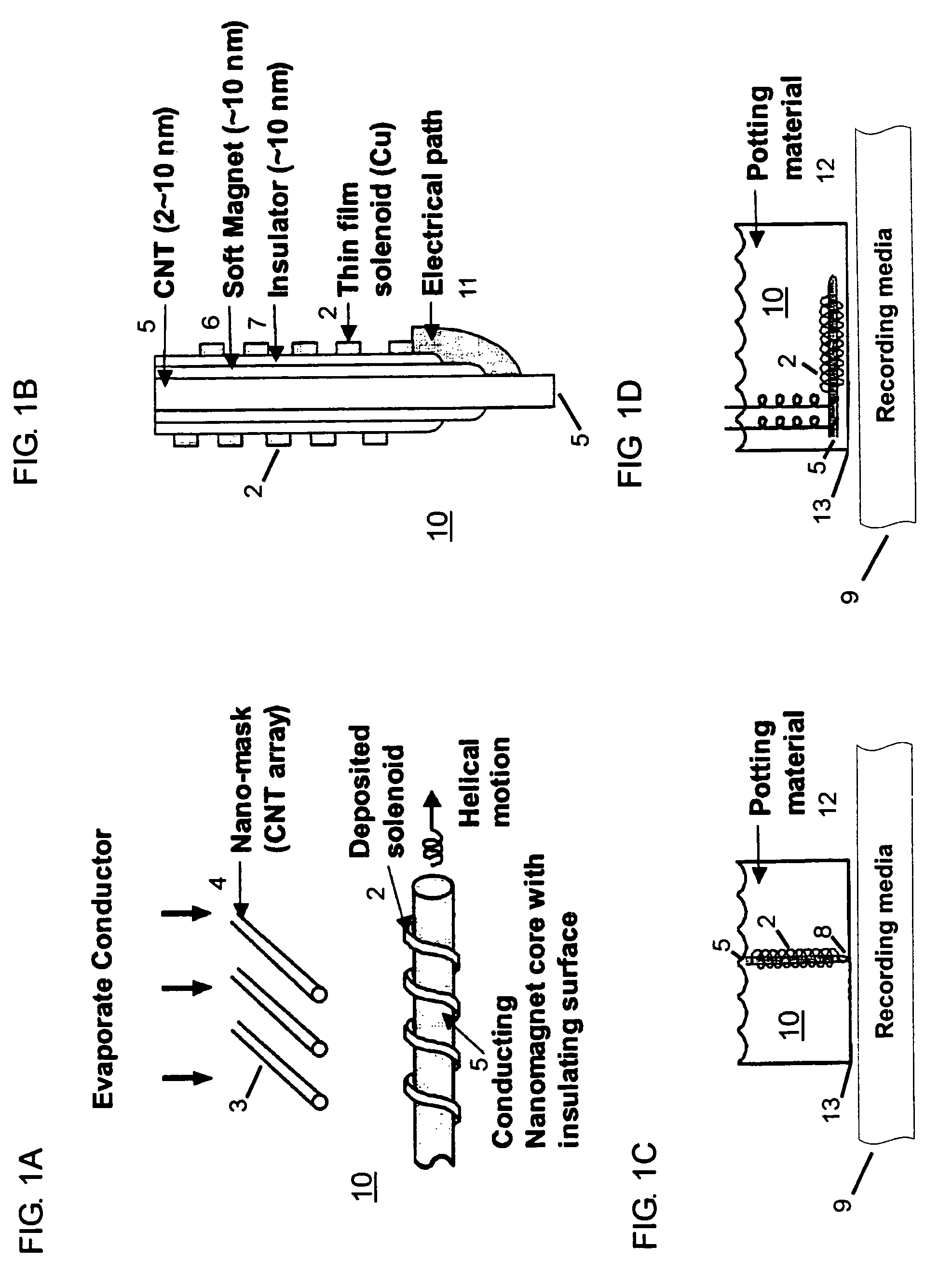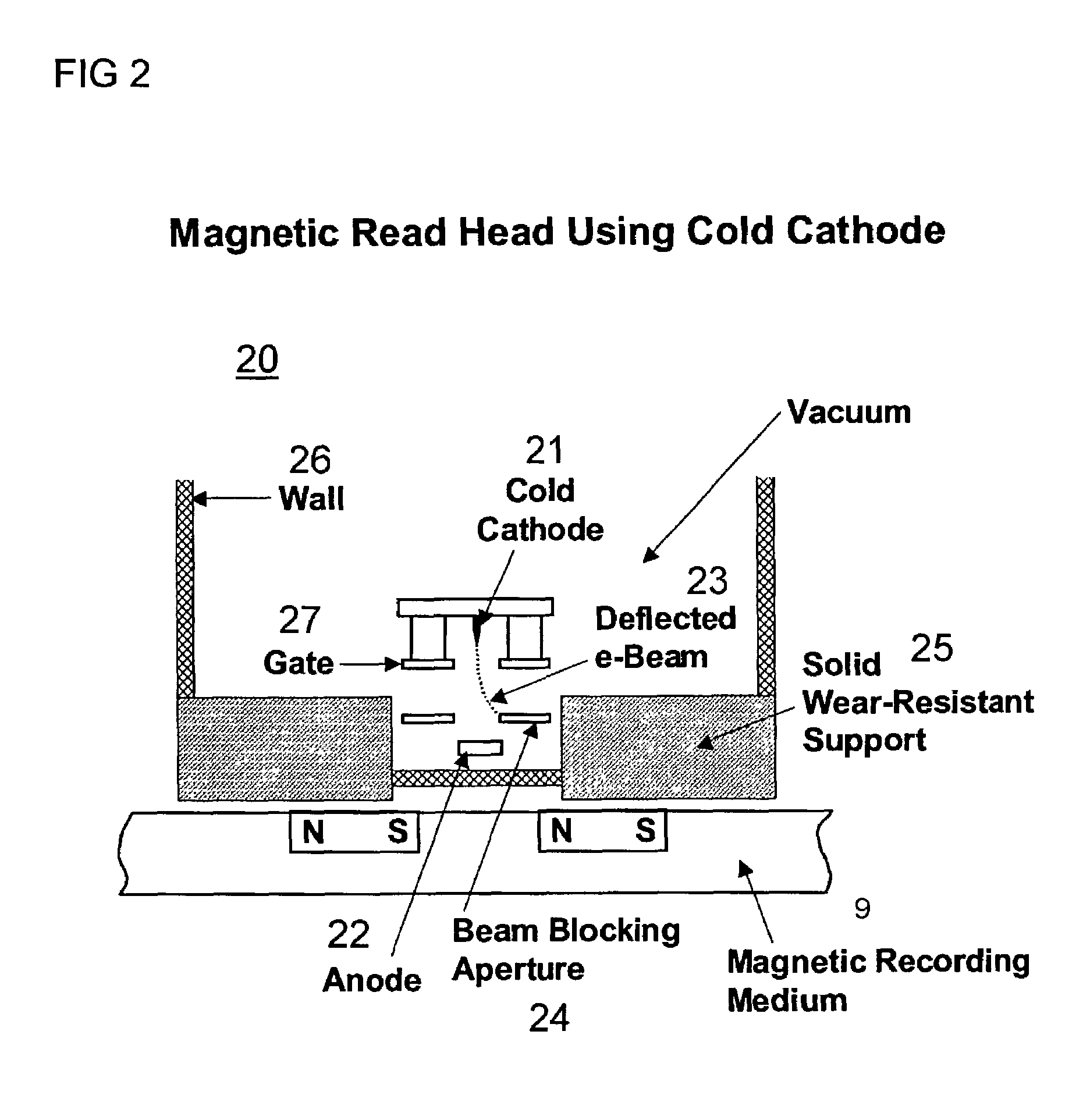Read head for ultra-high-density information storage media and method for making the same
a high-density, information storage technology, applied in the field of reading heads for ultra-high-density information storage media, can solve the problems of not being able to effectively detect such fine nanoscale features with laser optical techniques, and not being likely to be sensitive enough for future ultra-high-density recording media, etc., to achieve high-density magnetic media and high-density cd roms
- Summary
- Abstract
- Description
- Claims
- Application Information
AI Technical Summary
Benefits of technology
Problems solved by technology
Method used
Image
Examples
example
[0036]With 103 e-beam sources in an array, the speed of information management can be about thousand times faster than for a single source reader such as a laser-based CD-ROM reader. If there are 106 e-beam sources, the speed will be about one million times faster. The two-dimensional CD-ROM reader is desirably at least 1000 times faster, and preferably at least one million times faster than the conventional, laser-based CD-ROM reader for reading the same number of information bits.
PUM
 Login to View More
Login to View More Abstract
Description
Claims
Application Information
 Login to View More
Login to View More - R&D
- Intellectual Property
- Life Sciences
- Materials
- Tech Scout
- Unparalleled Data Quality
- Higher Quality Content
- 60% Fewer Hallucinations
Browse by: Latest US Patents, China's latest patents, Technical Efficacy Thesaurus, Application Domain, Technology Topic, Popular Technical Reports.
© 2025 PatSnap. All rights reserved.Legal|Privacy policy|Modern Slavery Act Transparency Statement|Sitemap|About US| Contact US: help@patsnap.com



